Origins
With great fanfare two of the stylish, high-speed train sets were built for the Chicago North Shore & Milwaukee interurban railway line. Known as Electroliners, they were erected in 1941 by the St. Louis Car Co. The North Shore Line hoped to make as much of the art deco styling as the Burlington did with its famous Zephyrs or the Milwaukee Road did with its Hiawatha trains.
Each outfit (nos. 801-802 and 803-804) had two end units and two center cars – a luxury coach and a tavern/smoking car. Most commuter-type trains of the era were simple conveyances. You got on, sat down, and got off. The Electroliners dared to be different. Why?
The North Shore Line competed fiercely for Chicago-Milwaukee passengers with the Milwaukee Road and the Chicago & North Western. Its Electroliners had the audacity to offer onboard refreshments!
Speed, style, and a beer were a winning combination. But it was service that sold the trains, not just the prospect of having a cold bottle of Schlitz.
Unfortunately for the North Shore Line, the rise of the automobile had as drastic an impact on it as it did on the steam railroads. The line succumbed to low traffic in the early 1960s.
Nine months after the North Shore closed in 1963, the train sets were bought from a scrap dealer by the Philadelphia area’s Red Arrow Lines.
The transit company’s shops accomplished some wide-ranging modifications, the most significant being the conversion from overhead catenary operation to third-rail power. Another change was due to the nature of established station platforms. Additional mid-train passenger doors were installed, eliminating step-downs, since all passengers on the Red Arrow route boarded on elevated platforms.
Also accomplished were some sprucing up of the interiors and the renaming of the rigs. The trains were dubbed Liberty Liners, in keeping with the patriotic history of Philadelphia, re-named Valley Forge and Independence Hall.
Red Arrow introduced the trains to the public with great fanfare. The commuting public reacted positively to a train that offered coffee and doughnuts on the way to work and more potent beverages when returning home.
The trains were retired in the 1970s, and this time they weren’t removed from service because of falling ridership – they had reached the end of their operational life.
One set resides at the Illinois Railway Museum in Union, Ill., and the other set is on display at the Rockhill Trolley Museum in Osbornia, Pa.
Opening the box
The standard way most of these MTH streamliners are connected is through an over-lapping system of connections. The lead control car has a powered truck and an unpowered truck. The second truck is the fifth wheel, so to speak, where the follow-on car connects and the tether mates.
That car in turn has a rear unpowered truck that serves as the mating platform for the third car, as has the third car for mating with the rear control car (that has a powered truck).
Taking this outfit out of the box and connecting it into a single train, I was struck with an odd thought. Over the years I’ve had the chance to play with several of MTH’s multi-part trains, such as the M-10000, Flying Yankee, Aerotrain, and the Zephyr.
This rig looks … well … cozy. Oh, it evoked the speed imagery, but the train set itself wasn’t oppressive in size or scope. It didn’t look like it was going for maximum capacity, nor did it appear ready to rocket to the moon. The size of the train, to paraphrase Goldilocks, looks “Just right.”
Actually, this “look” mirrors one of the design requirements of the prototype – the cars needed to be short in order to navigate the tight turns of Chicago’s elevated lines. Still, this was a more comfortable small train than I had expected to see.
Okay, enough of the conceptual touchy-feely stuff.
This is a nicely appointed set, but let me state from the outset that this is pretty much the Electroliner in Liberty Liner colors Where you do have the third-rail power replacing the catenary, you don’t have the additional doors. As with the Flying Yankee, this works for me – better to have a representation of the train than no train at all. But if it matters to you, be forewarned.
The power cars have crew cabs that are naturally low to the track. They almost look more like a streamlined observation car than the lead element of a train! They have smooth, black-painted pilots and graceful tapering around the nose. There are two wiper arms located on the end, and gray plastic flags are mounted, bracketing the front windows.
The headlight (and two marker/classification lights) is mounted in the center of the top. Below the floor-line you’ll see detail of battery cases and the air-conditioning system.
The cars have interior decoration that includes seats, passengers, and lighting. It struck me that the lighting was bright enough to see the inside in dim or dark lighting, but not so bright as to be blinding.
Painting and decoration were good – the Red Arrow Lines paint scheme looks smart zipping around an O gauge curve at high speed!
On the test track
The trickiest thing about running this train is the initial setup, connecting the tethers and making sure the cars are mounted correctly. Beyond that bit of connecting and seating, it is smooth sailing on the tinplate rails.
The two motors – one at each end of the train – demonstrated smooth response in all speed ranges.
Our low-speed average in command mode was 3.1 scale miles per hour, while the average in conventional mode was 6.6 scale miles per hour. The high-speed average was 87 scale miles per hour.
Since this is a closed train that can’t mate with any other rolling stock, drawbar pull was not applicable.
The sounds were familiar, and their reproduction was clear and distinct.
This is a dandy little rocket that may be the best short passenger train I’ve run. It is compact, yet offers us grown-up kids plenty of play value.
Features: O-42 operation, two can-style motors, ProtoSound 2.0





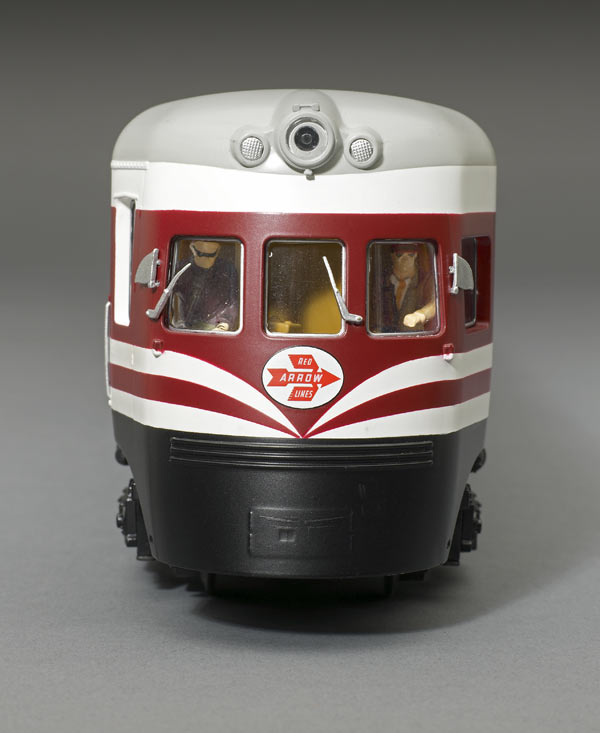

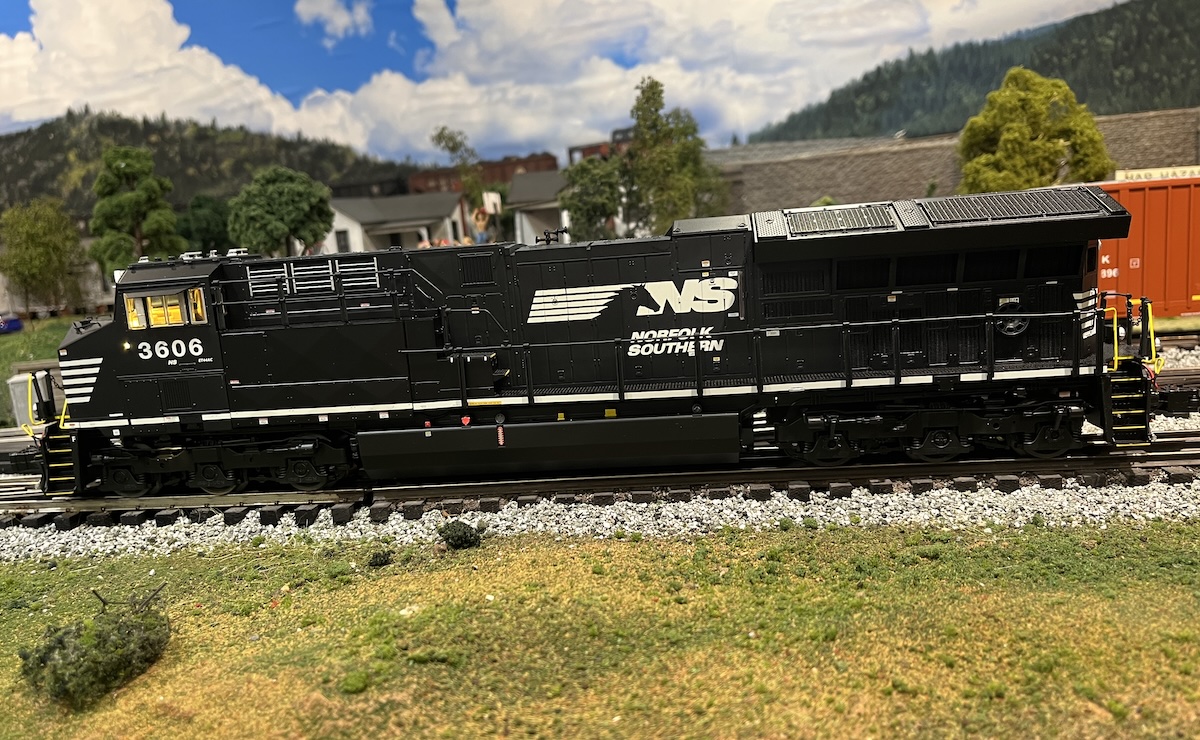
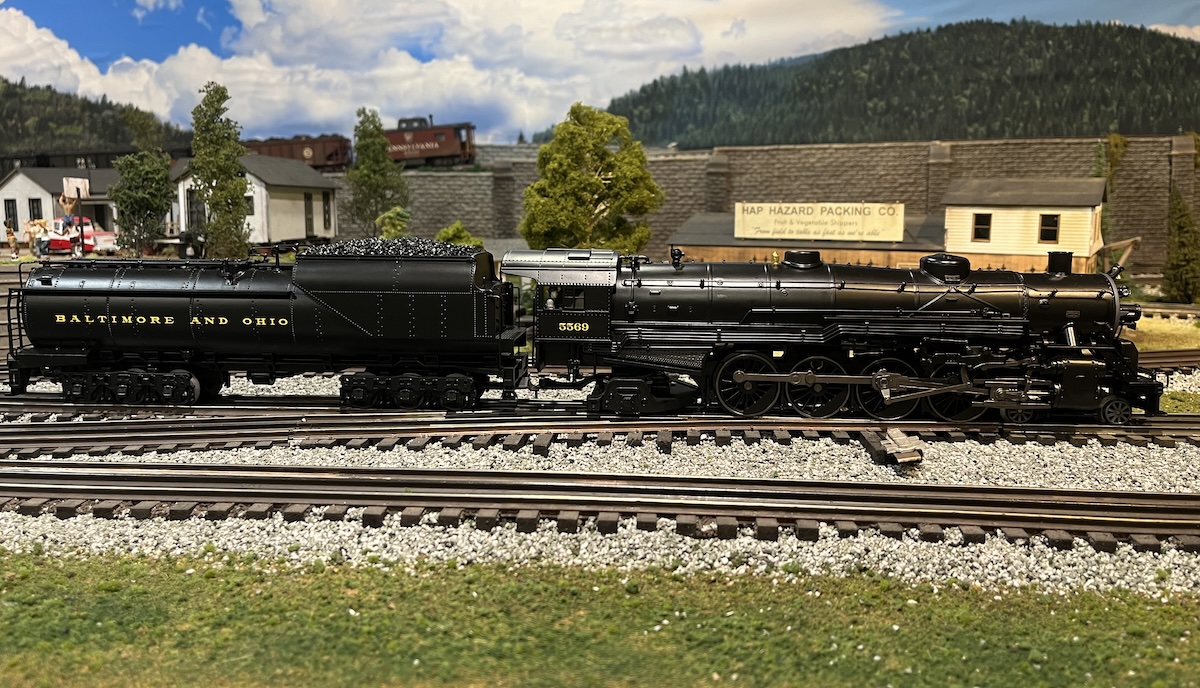
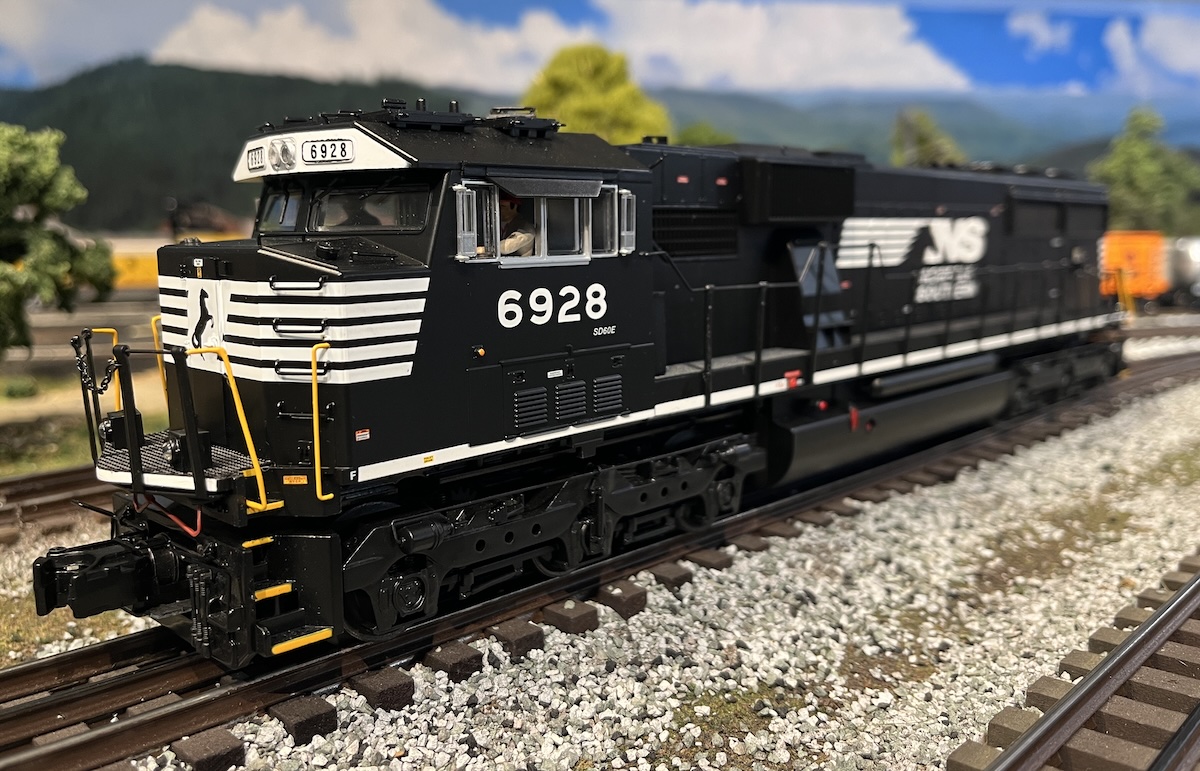
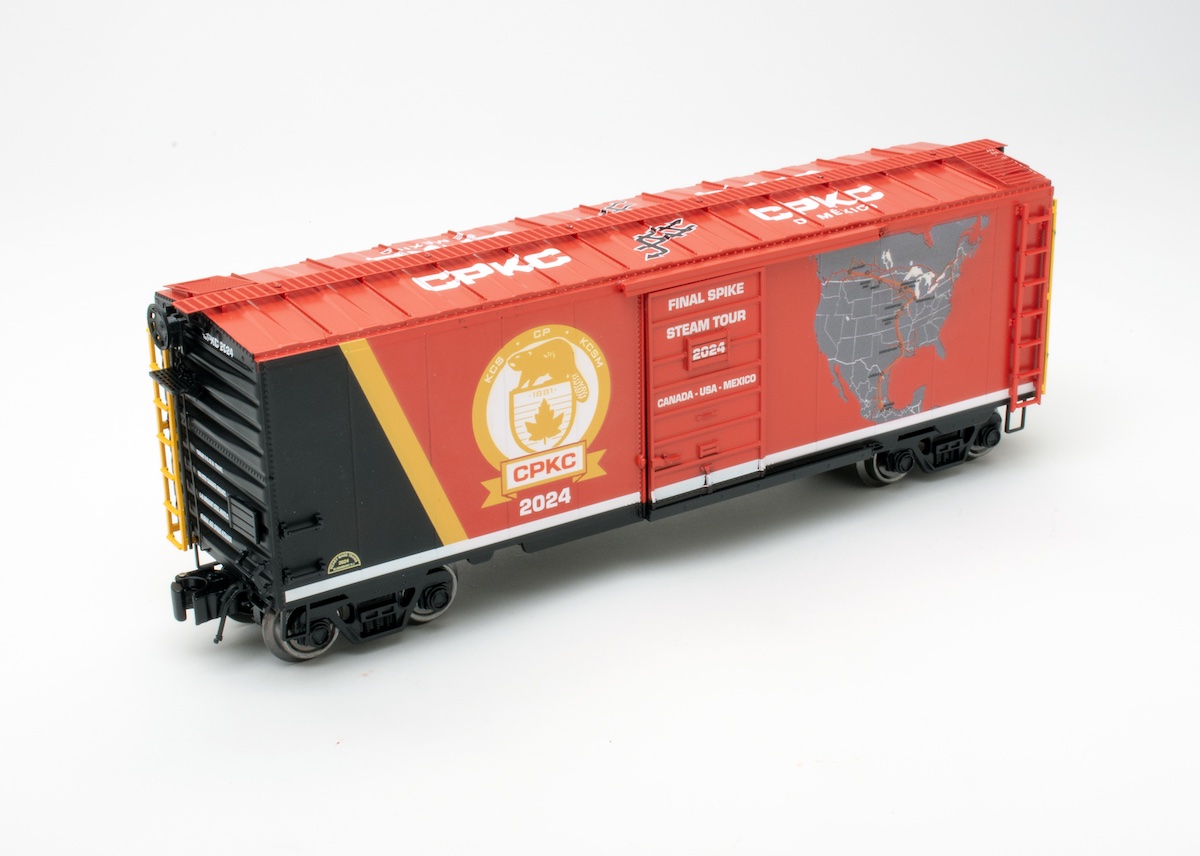




In the video you should have let us listen to the station sounds.
Bob Keller is one of the best writers at CTT! Keep up the great work Bob!